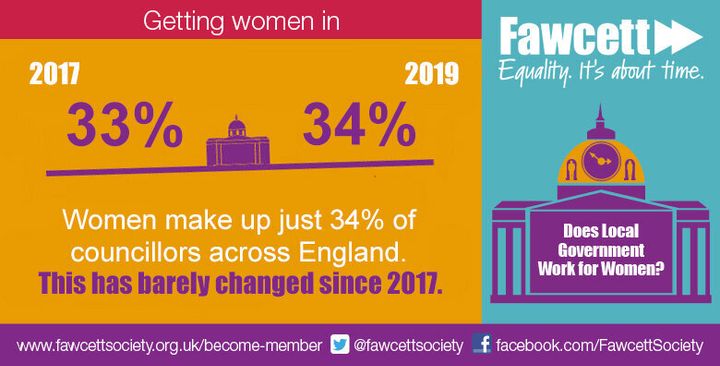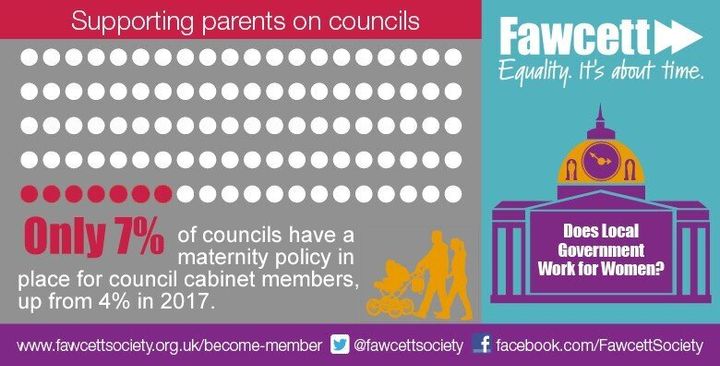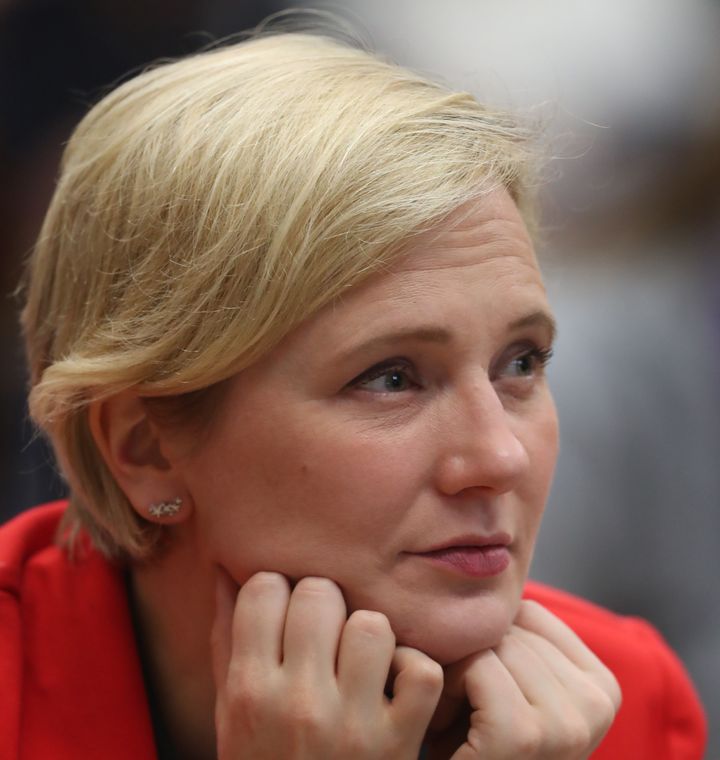
The 2019 elections did almost nothing to boost the gender balance between male and female councillors, a report has found
Research by the Fawcett Society has shown that just 34% of England’s councillors are female, despite this year’s poll - the biggest in four years - electing some 8,410 new local representatives.
The picture has barely changed since 2017, with town halls moving less than a single percentage point toward gender equality.
The new data also shows that 96% of councils remain male-dominated and women remain outnumbered three-to-one on 14% of councils.
The party which won the most seats, the Conservatives, had just 30% women councillors. The Liberal Democrats had 34%, while Labour had 45% women councillors. Just 29% of the independents elected were women.

A freedom of information probe by the women’s rights charity also examined local authority’s maternity policy.
Just 20 councils (8%) have one in place for senior cabinet-level councillors, while 7% have a maternity policy for ordinary councillor roles.
Sam Smethers, chief executive of the Fawcett Society, said women’s representation in local government was “at a standstill”.
“This is fundamentally unacceptable and all parties must take action to change it,” she said. “Local government has a disproportionate impact on women’s lives so it particularly needs to have women’s voices heard.
“It is shocking that in 2019 just 20 councils reported having maternity policies in place for councillors. There is no excuse for this inaction.”
Better technology so councillors can attend meetings remotely and support with childcare costs are among the measures that should be introduced, the charity has said.

Codes of conduct and effective standards committees to enforce them may also help, it said. Previous research by the charity found a third of female councillors had experienced sexism from colleagues.
The research also found:
The ten worst councils for women’s representation were: Redditch; Craven; West Berkshire; Swale; East Sussex; Huntingdonshire; Isle of Wight; Hambleton; Gloucestershire; and Castle Point. In these councils, less than one in five councillors is a woman.
35 councils were at or very close to equality with over 45% women. Nottingham (55%) and East Cambridgeshire (54%) had the highest women’s representation.
Marianne Overton, vice chairwoman of the Local Government Association, a body which represents councils, said town should reflect their communities.
“The latest figures show that there is still more to be done to reduce the gap between women and men elected to local government,” she said. “Councils want to see more women, parents and carers stand for election and to step up to leadership roles in local government to create a working environment that is supportive for people from all groups and backgrounds.”
In Westminster, the gender balance is even further tipped in favour of men, with just 32% of MPs elected in 2017 being women.

This figure is despite a record number of female MPs being elected - 208 up from 191 in 2015.
Parliament’s maternity policy also came under scrutiny in recent weeks, with Labour MP Stella Creasy revealing she felt forced to “choose between being an MP and being a mum”.
Ipsa - the body which regulates MPs’ pay - have made it “impossible” to fulfil her responsibilities to her constituents once her baby is born, she said.
The body does not automatically provide paid cover for MPs on parental leave, though MPs themselves are paid in full for the whole period.
